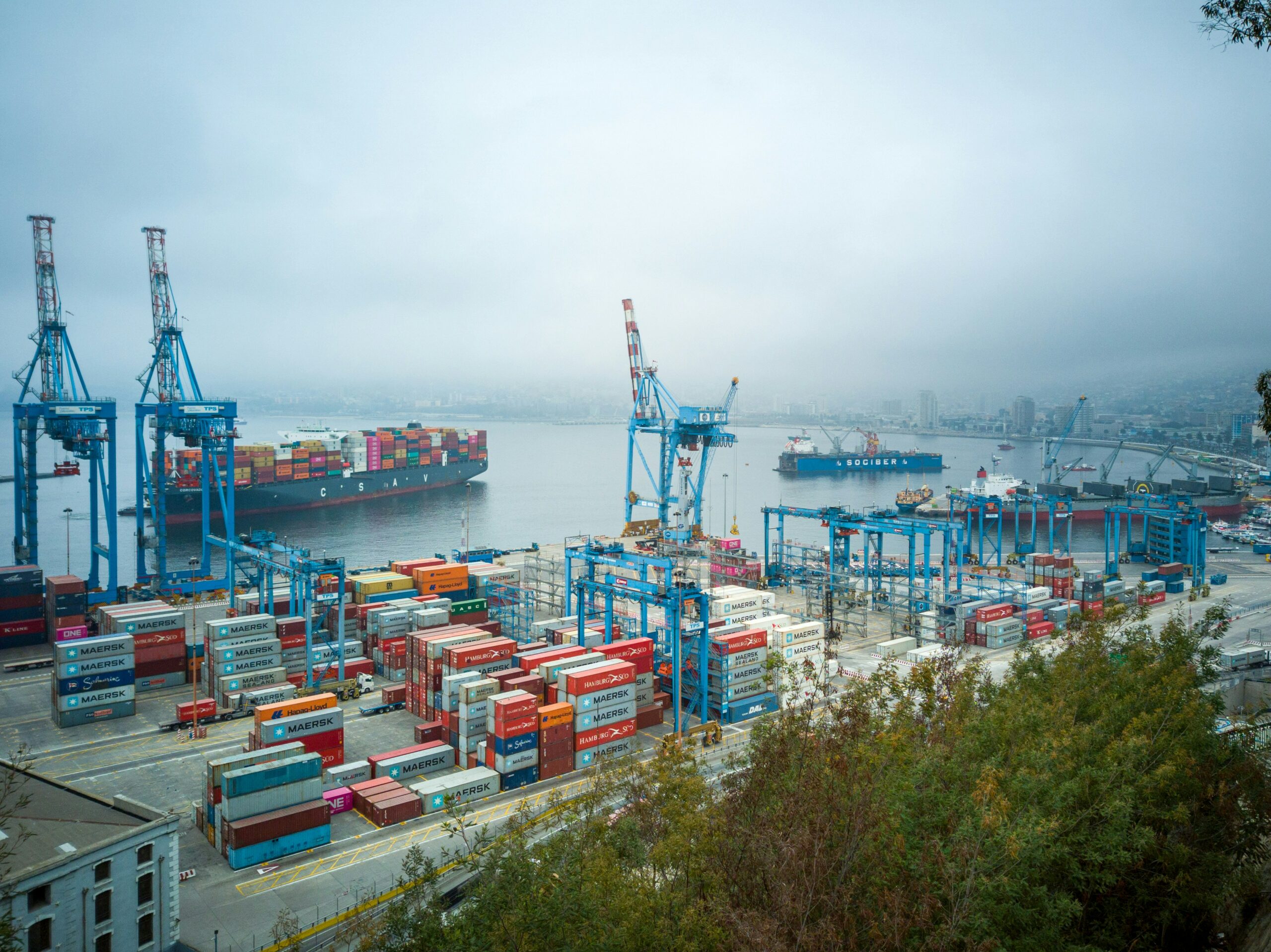Welcome to Climate Tech Pulse, your daily dose of market intelligence helping fuel the fight against climate change. From groundbreaking investments to cutting-edge research, we’re bringing you the latest in climate tech that’s shaping our future.
Don’t miss out on tomorrow’s climate solutions – subscribe now to stay ahead of the curve! https://lnkd.in/dwr7B9XJ
Today’s newsletter:
🔝Today’s Top Story: Swiss-based energy storage company Terralayr has raised €77M in a mix of equity and debt, backed by Creandum, Earlybird, Norrsken VC, Picus Capital, and Rive Private Investment.

📊 Today’s Data Point: The International Energy Agency (IEA) has released a new report outlining a significant shift in global energy dynamics.
🌳 Climate Insider Intelligence: Deep Dive on Breakthrough Energy’s 2024 Annual Report.
Swiss Energy Storage Pioneer Terralayr Secures €77M to Revolutionize Grid-Scale Flexibility and Drive Net-Zero Transition
Image Credit: terralayr
Terralayr Secures €77M to Expand Energy Storage Solutions
Swiss-based energy storage company Terralayr has raised €77M in a mix of equity and debt, backed by Creandum, Earlybird, Norrsken VC, Picus Capital, and Rive Private Investment. This capital will fuel the company’s growth, focusing on the expansion of its grid-scale battery storage systems. The funding marks a key step in Terralayr’s goal to enhance the integration of renewable energy into the grid.
A Marketplace for Energy Flexibility
Terralayr, founded in 2022 by Philipp Man and Ludwig Wurlitzer, operates as a developer and aggregator of battery storage assets. The company’s innovative cloud-like platform offers “flexibility as a service,” optimizing grid storage for key sectors like power producers, traders, and data centers. Their model allows customers to enjoy the benefits of battery storage without the need for physical ownership, providing services with durations from minutes to years.
Scaling to Meet Net-Zero Goals
Terralayr has already secured over 5GW in development agreements, with its first operational asset, trlyr1, launched in May 2023. By enabling energy storage on demand, the company is helping remove key barriers to renewable energy adoption. With a leadership team from industry giants like RWE and Fluence, Terralayr is positioned to play a critical role in driving the energy transition toward a net-zero future. Read More
Market Movers
- Wärtsilä will supply its Quantum High Energy storage technology for a 300MWh battery energy storage system in South Australia, marking a significant step in Amp Energy’s Bungama project to enhance grid stability and renewable energy integration. Read More
- Oriana Power plans to invest $60 million to establish a one-gigawatt electrolyser factory in India by 2027, with a 500 MW phase operational by 2026, while also advancing green hydrogen and e-fuels projects, positioning itself as a key player in India’s renewable energy sector. Read More
- Oriole Networks has raised €20.2 million to scale its photonics-based AI chip technology, which trains Large Language Models up to 100x faster and with significantly less energy, addressing critical challenges of speed, latency, and sustainability in AI and data center operations. Read More
Tech Spotlight
New Insights on Carbon Storage in Deep Oceans
Image Credit: phys.org
Source: University of California, Irvine
In a recent Nature Communications publication, researchers from UC Irvine revealed a novel technique for studying how marine bacteria store carbon in the deep ocean. This breakthrough allows scientists to track complex organic molecules, specifically carboxyl-rich alicyclic molecules (CRAM), which are involved in long-term carbon storage, offering new perspectives on mitigating climate change.
Commercial Viability
Market Impact:
The findings suggest a potential for utilizing natural oceanic processes to enhance carbon storage, offering an alternative to conventional carbon capture technologies. By better understanding CRAM storage, the research opens up opportunities for integrating biological systems into carbon sequestration strategies.
Cost-Effectiveness:
The ability to enhance deep-sea carbon storage through microbial activity could offer a cost-effective solution for long-term carbon sequestration. If these processes can be scaled or manipulated, it may reduce the reliance on more expensive artificial carbon capture methods.
Technical Viability
Technology Challenges:
Manipulating bacterial processes to enhance CRAM storage in the deep ocean is still in its early stages. The next challenge is identifying natural mechanisms to boost these processes globally and understanding their long-term effects on carbon storage and ocean ecosystems.
Efficiency Consideration:
The research highlights that certain types of CRAM are produced at the ocean’s surface and removed at depth by bacteria. If this natural cycle can be optimized, it could significantly increase the ocean’s capacity to store atmospheric CO2 over long periods.
Environmental Viability
Sustainability Alignment:
This technique aligns with sustainable climate goals by leveraging natural processes rather than relying solely on technological interventions. If proven effective on a larger scale, it could play a critical role in achieving long-term carbon neutrality.
Climate Impact:
The ability to store carbon in the deep ocean via microbial activity could offer a novel method for mitigating climate change, with the potential to affect atmospheric CO2 levels over centuries.
Scaling Potential
Investment Strategies:
Further research and investment into this method could shift funding priorities towards biological carbon sequestration solutions, potentially complementing existing technologies like direct air capture and afforestation.
Future Expansion:
The next step is determining whether these findings apply to other ocean regions, with the goal of enhancing CRAM production and storage on a global scale. The scalability of this process will depend on future breakthroughs in understanding deep ocean biochemistry.
Long-Term Implications
Reevaluating Oceanic Carbon Storage:
This discovery reshapes our understanding of how carbon cycles in the ocean and may lead to new strategies for long-term climate mitigation. As we further explore microbial processes, the deep ocean could become a critical frontier for carbon storage solutions.
Strategic Vision for Growth:
By focusing on natural oceanic carbon storage, a balanced approach that integrates biological, chemical, and technological methods will be key in combating climate change over the coming centuries. Read More
Policy Pulse
This section includes global updates on climate change policy, governance and regulation.
Korea to include construction of 4 small modular reactors in its energy plan.
South Korea plans to incorporate four small modular reactors (SMRs) into its upcoming basic energy plan, highlighting these scalable, next-generation reactors as key growth and export drivers, with the hope of securing bipartisan support.
Why it Matters: This development is significant as it positions South Korea to advance its clean energy transition with scalable nuclear technology while boosting its competitiveness in the global energy market. Read More
Today’s Climate Data Point
The International Energy Agency (IEA) has released a new report outlining a significant shift in global energy dynamics. The report predicts that by 2035, nearly all new energy demand will be met by clean energy, with fossil fuel use beginning to decline before 2030.
Key Findings:
- Electrification Surge: The rapid increase in electricity demand is driven largely by electric vehicles (EVs), especially in China, which could account for 50% of all new car sales globally by 2030.
- Oil Price Outlook: In a scenario based on current policies, oil prices may stabilize around $79 per barrel by 2030. However, if the world pursues net-zero emissions by 2050, oil could drop to $25 per barrel due to diminished demand.
- Renewable Growth: Solar and wind energy are expected to grow significantly, with solar capacity tripling and wind capacity doubling by 2030.
- Fossil Fuel Oversupply: An expected surplus in liquefied natural gas (LNG) could lead to lower prices, potentially slowing the transition to renewable energy as fossil fuels remain economically attractive.
Implications:
- Oil Demand Decline: EV adoption will reduce oil demand by about 6 million barrels per day by 2030.
- Policy Dilemma: While cheaper fossil fuels could offer short-term economic benefits, they risk delaying crucial investments in clean energy.
Climate Insider Analysis:
The IEA’s findings highlight a critical crossroad for global energy policy. The rapid rise of EVs and renewable energy offers hope for a greener future, but the potential oversupply of LNG presents challenges. To stay on track with climate goals, governments and industries must resist the temptation of short-term gains from fossil fuels and continue investing in sustainable energy solutions. Read More
Climate Insider Intelligence: Deep Dive on Breakthrough Energy’s 2024 Annual Report
In a crucial year for the energy transition, Bill Gates’ Breakthrough Energy 2024 Annual Report reveals that climate tech has moved beyond the pilot stage and into full-scale commercial deployment. Gates likens this moment to the global health efforts of the early 2000s, where scaling existing solutions was key to saving millions of lives. Similarly, today’s challenge is not just inventing new climate solutions but deploying them rapidly across industries. The report highlights game-changing investments in fusion energy, sustainable aviation fuel, and clean hydrogen, while also identifying major roadblocks like funding gaps, infrastructure bottlenecks, and policy hurdles. Could 2024 be the year climate tech truly takes off?








